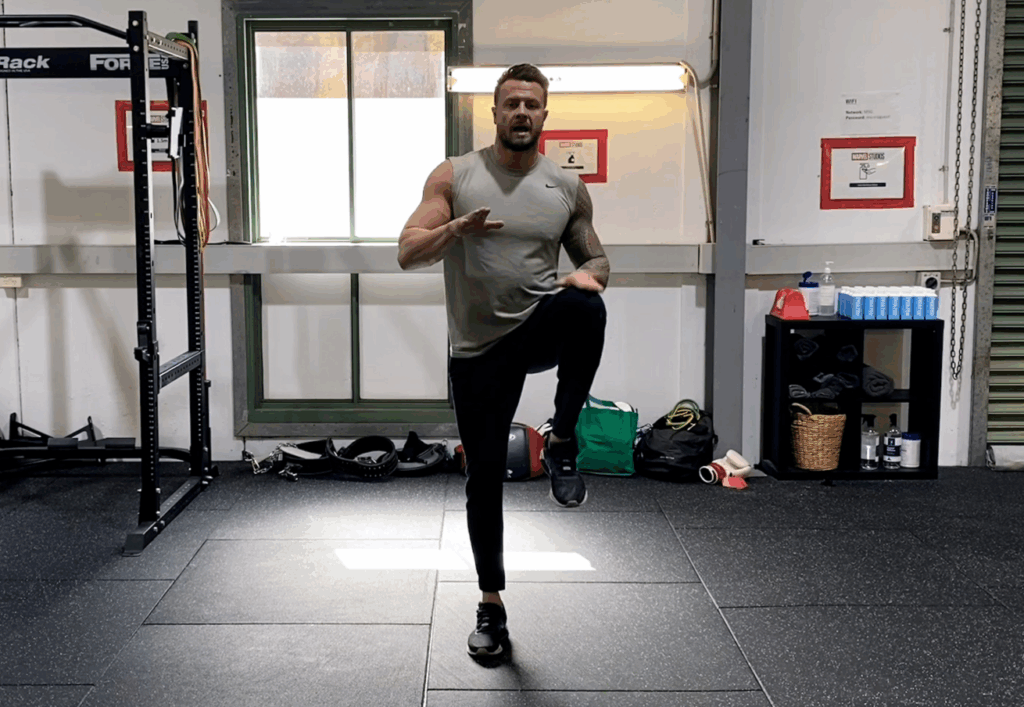You’ve probably noticed how some people seem to defy their age while others look worn down by the years. The difference isn’t just genetics, it’s movement. Science shows that specific exercises can actually reverse cellular aging, boost your hormones, and restore youthful energy. But it’s not about crushing yourself in the gym. The real anti-aging secrets might surprise you.
The Science Behind Anti-Ageing Workouts
When you understand how exercise directly impacts your cells and hormones, you’ll see why movement is nature’s most powerful anti-aging medicine. The science behind anti-ageing workouts reveals that regular physical activity triggers cellular repair processes and boosts mitochondrial function. You’re literally strengthening your body at the microscopic level.
Working out boosts natural growth hormone and testosterone levels, while helping lower the inflammation that speeds up aging. Your telomeres actually lengthen with consistent training, promoting longevity. Studies show that active individuals have biological ages up to nine years younger than their sedentary counterparts.
Through movement, you’re not just building muscle and endurance. You’re activating genes that slow cellular aging, improving insulin sensitivity, and enhancing brain-derived neurotrophic factor production for sharper cognition.
Mobility Boosters: Keep Your Joints and Hips Young
As you age, your joints and hips often become the first casualties of a sedentary lifestyle, but targeted mobility work can reverse years of stiffness and discomfort. You’ll notice immediate mobility improvement by incorporating daily hip circles, leg swings, and cat-cow stretches into your routine. These flexibility exercises don’t require equipment with just 10 minutes each morning.
Focus on dynamic movements that take your joints through their full range of motion. Try walking lunges with a twist, shoulder rolls, and ankle rotations. You’re not just stretching; you’re lubricating joint surfaces and strengthening surrounding muscles. Add gentle yoga flows like sun salutations to combine multiple mobility patterns.
Remember, consistency beats intensity. The small daily efforts compound into significant long-term gains for your joint health.

Strength Training for Anti-Ageing
The power to reverse muscle loss and rebuild your body’s strength lies in resistance training. It holds the key to fighting muscle loss and rebuilding strength, especially after 30, when muscle mass typically declines by 3 to 8 percent each decade. You’ll protect your bones, boost metabolism, and maintain independence through targeted strength training that addresses age-related decline.
Start with bodyweight exercises that build functional fitness for daily activities. As you progress, incorporate light dumbbells or resistance bands to challenge your muscles further. Focus on compound movements simultaneously, maximizing efficiency and hormonal benefits.
Aim for 2-3 strength sessions weekly, allowing recovery between workouts. You’ll notice improved posture, easier movement patterns, and increased energy levels within weeks of consistent training.
Cardio That Doesn’t Age You
Your heart doesn’t need punishing workouts to stay young. It needs smart cardio that enhances rather than exhausts your body’s natural repair systems. You’ll boost cardiovascular health without wearing down your joints by choosing low-impact options for heart and lung health.
Try brisk walking for 30 minutes daily to strengthen your heart while protecting your knees and hips. Swimming provides full-body conditioning with zero joint stress. You’re floating while your cardiovascular system gets stronger.
Interval training works brilliantly too. Alternate between moderate effort and brief intensity bursts. You’ll improve oxygen uptake and circulation without marathon-level strain.
These activities increase blood flow, enhance lung capacity, and support cellular regeneration. You’re not just exercising, you’re giving your body the movement medicine it needs to thrive for decades.

Balance and Coordination Routines
Great cardio keeps your heart young, but staying upright and steady on your feet becomes equally important as you age. Balance exercises aren’t just about preventing falls. They’re about maintaining your independence and confidence in daily movements.
Start with simple single-leg stands, holding for 30 seconds on each side. Progress to heel-to-toe walks, mimicking a tightrope walker’s movements. Boost your balance by brushing your teeth while standing on one leg or by closing your eyes during balance exercises to engage your sense of body awareness.
For fall prevention, incorporate ankle circles and calf raises to strengthen stabilizing muscles. Practice getting up from a chair without using your hands, and add lateral leg lifts to improve hip stability. These coordination drills enhance your brain-body connection, keeping you agile and reducing injury risk.
Flexibility and Recovery Work
While strength and balance keep you moving, flexibility work guarantees you can move freely without pain or restriction. You’ll maintain joint health through daily stretching routines that target tight spots like hips, hamstrings, and shoulders. Static stretches held for 30-60 seconds improve your range of motion and reduce stiffness that accumulates with age.
Flexibility training doesn’t stop at stretching. You’ll benefit from foam rolling to release muscle tension and improve blood flow. Try yoga-inspired movements like cat-cow stretches and child’s pose to enhance spinal mobility. These recovery techniques speed up healing between workouts and prevent injuries.
Dedicate 10-15 minutes daily to flexibility work, ideally after exercise when your muscles are warm. You’ll notice improved posture, reduced aches, and smoother movements throughout your day.
Hormonal and Mental Health Benefits
As you age, exercise becomes your most powerful tool for optimizing hormones and protecting mental health. You’ll boost testosterone and growth hormone while reducing cortisol through age-reversing workouts like resistance training and high-intensity intervals. These exercises don’t just build muscle. They reshape your hormonal health from the inside out.
Mind-body practices like tai chi and yoga work differently. They’ll calm your nervous system, improve focus, and combat age-related cognitive decline. You’re literally rewiring your brain with each session, creating new neural pathways that keep you sharp.
The mental benefits are immediate. You’ll notice reduced anxiety, better sleep, and improved mood after just one workout. Over time, you’re building resilience against depression and maintaining the hormonal balance that keeps you feeling decades younger.

Crafting Your Weekly Anti-Ageing Routine
Building your perfect anti-ageing routine starts with understanding that consistency beats intensity every time. You’ll want to combine strength training, cardio, and mobility work throughout your week for maximum benefits.
Your anti-ageing workout plan should include three strength sessions targeting major muscle groups, two cardio workouts mixing low-impact and interval training, and daily mobility exercises. Schedule harder workouts early in the week when you’re fresh, leaving lighter activities for later days.
When crafting your weekly anti-ageing routine, listen to your body’s signals. If you’re feeling fatigued, swap intense sessions for gentle yoga or walking. Progress gradually by adding five minutes or one extra set monthly.
Your routine is about sustainable movement that keeps you feeling vibrant for decades.
Frequently Asked Questions
What Age Should I Start Doing Anti-Ageing Exercises?
You should start anti-aging exercises in your 20s and 30s to build a strong foundation. However, it’s never too late to begin – whether you’re 40, 60, or beyond, you’ll still gain significant benefits.
Can I Do These Exercises With Existing Injuries or Chronic Conditions?
Yes, you can exercise with injuries or chronic conditions, but you’ll need modifications. Consult your doctor first, then work with a qualified trainer who understands your limitations. They’ll adapt movements to keep you safe while building strength.
How Long Before I See Noticeable Results From Anti-Ageing Workouts?
You’ll notice improved energy and mood within two weeks. Physical changes like better posture and flexibility appear around four weeks. Significant strength gains and visible muscle tone typically develop after eight to twelve weeks of consistency.
Do I Need Special Equipment or a Gym Membership for These Exercises?
You don’t need fancy equipment or a gym membership to start. Most effective anti-ageing exercises use just your bodyweight, such as squats, push-ups, and stretches. A resistance band or light dumbbells can enhance results, but they’re optional.
Should I Modify My Diet Alongside These Anti-Ageing Exercise Routines?
Yes, you’ll maximize results by pairing exercise with proper nutrition. Focus on adequate protein for muscle recovery, anti-inflammatory foods, and staying hydrated. Small dietary adjustments alongside your workouts can substantially/considerably/greatly boost your energy and recovery.





